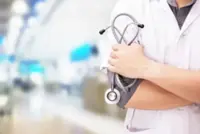The Safer at Home programme provides a pre-programmed mobile phone that allows patients to communicate with a medical team via audio or video call, so that they can be monitored and managed at home, rather than be admitted to the hospital. — TNS
After dealing with a persistent cough and diarrhoea, and cycling through various over-the-counter medications, Javier Muniz finally went to urgent care at the Los Angeles County-USC Medical Center last month (April 2023).
Physicians at the hospital in the United States, which has since been renamed the Los Angeles General Medical Center, realised that Muniz’s medical history included living with HIV (human immunodeficiency virus).
Already a subscriber? Log in
Save 30% OFF The Star Digital Access
Cancel anytime. Ad-free. Unlimited access with perks.





